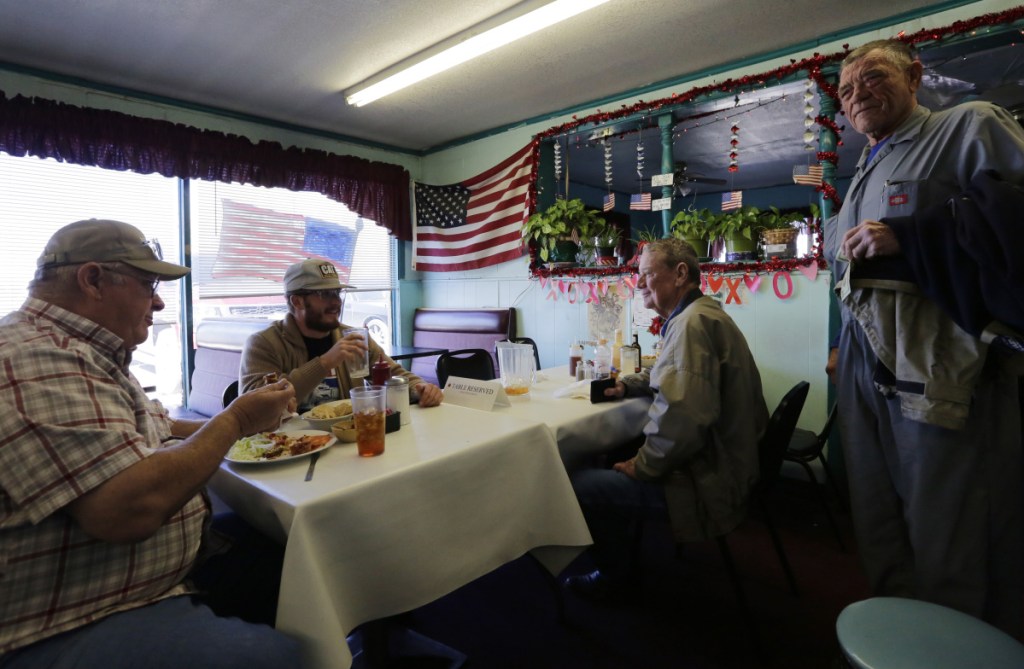FORT HANCOCK, Texas — Donald Trump didn’t carry many parts of Texas’ heavily Democratic areas along the border with Mexico, but he won remote Hudspeth County thanks to people like Terry Rose. And the 71-year-old mechanic saw the longest shutdown in U.S. history as a campaign promise kept.
“I want less government. That’s what we’re getting,” said Rose, who was having lunch with a group of friends in Fort Hancock, just across the border from El Porvenir, Mexico. “I’m understanding about federal employees, but if you’re ‘non-essential’ it’s hard to feel too badly for you.”
The shutdown – which lasted 35 days and ended Friday with Trump agreeing to fund the government for three weeks – did dramatically shrink the size of government at least temporarily. Funding was cut off for nine of the 15 Cabinet-level departments and about 800,000 employees went without pay, nearly half of whom were deemed non-essential and told not to report to work.
Even as it eroded the president’s approval rating, the shutdown energized a segment of the Republican base that has for decades heard presidential hopefuls vow to abolish the IRS and mothball the departments of Education, Energy or Interior or many other agencies, without actually accomplishing anything close. It’s a reminder that should Trump choose a shutdown again, as he threatened Friday, he is likely to have some supporters cheering him on.
But the shutdown didn’t repair a decades-long schism within the Republican Party between conservatives, who would like to see some parts of government contract but don’t mind creating deficits for things like tax cuts and defense spending, and libertarians, whose main goal is to get government out of peoples’ lives almost entirely. Trump has backed increasing the size of the federal budget, whether to raise military spending or to spend billions walling off the entire U.S.-Mexico border, making him no true champion of small government. Libertarians and fiscal conservatives are also quick to point out that shuttering the government indiscriminately because of political squabbles did nothing to reduce long-term federal spending or have any lasting, meaningful impact on government’s overall size and scope.
Jeffrey Miron, director of economic studies at the libertarian Cato Institute, noted that the shutdown continuing for so long likely will end up costing taxpayers more to make up for lost time as things begin returning to normal.
“This just makes small-government people, and conservatives who claim to be small-government people, look like they’re angry, aggressive, willing to cause people to go without their paychecks,” Miron said.
Rose considers himself a conservative and not a Republican, but concedes he almost always votes Republican. He said he feels for those who missed paychecks: “I don’t want to be mean to them, but it’s really a system that’s overburdened, out of control.”
Gene Henderson, a 69-year-old Vietnam veteran and retired Border Patrol agent, agreed that the shutdown was a positive example of small government and predicted it could cement Trump’s 2020 re-election.
“People sent him up there to stop all this stuff and to drain the swamp,” Henderson said of Washington. “And he’ll be sent up there again.”
But Joe Brettell, a Republican strategist in Houston, said the shutdown taught the Trump administration “how widespread and diverse the federal government is.”
“There isn’t a single member of the House that doesn’t have a federal agency in their district,” Brettell said. “As a result, you’ve got members of all stripes taking calls from people facing really dire financial situations.”
It’s hard to get farther away from Capitol Hill than Fort Hancock. Trump won the county that encompasses it by 179 votes out of fewer than 900 cast in 2016. But much of the rest of Texas’ heavily Hispanic border areas tend to favor Democrats.
Possible 2020 presidential candidate Beto O’Rourke hails from neighboring El Paso County, which went for Hillary Clinton by nearly 45 percentage points.
Still, locals have an unusual view of the issue at the center of the shutdown – the border wall – because they can see it literally from two sides. A barrier of towering steel runs through much of town, then stops, giving way to low barbed-wire or, eventually, nothing at all. So some residents know life with a border wall and others know life without one.
Many Trump supporters here dismiss the notion of building a wall the length of the 2,000-mile U.S.-Mexico border, but believe Trump was right to hold out for expanding it as much as possible.
Isela Duran, who was part of the construction crew that helped build the Fort Hancock wall about 10 years ago, said she feels for the federal workers who were furloughed so long. “But I think about us over here, too, and keeping ourselves safe.”
The shutdown damaged Trump’s overall approval ratings, according to a new poll by The Associated Press-NORC Center for Public Affairs Research, which showed the number of Americans who approve of his performance dropping to 34 percent from 42 percent a month earlier.
Send questions/comments to the editors.


